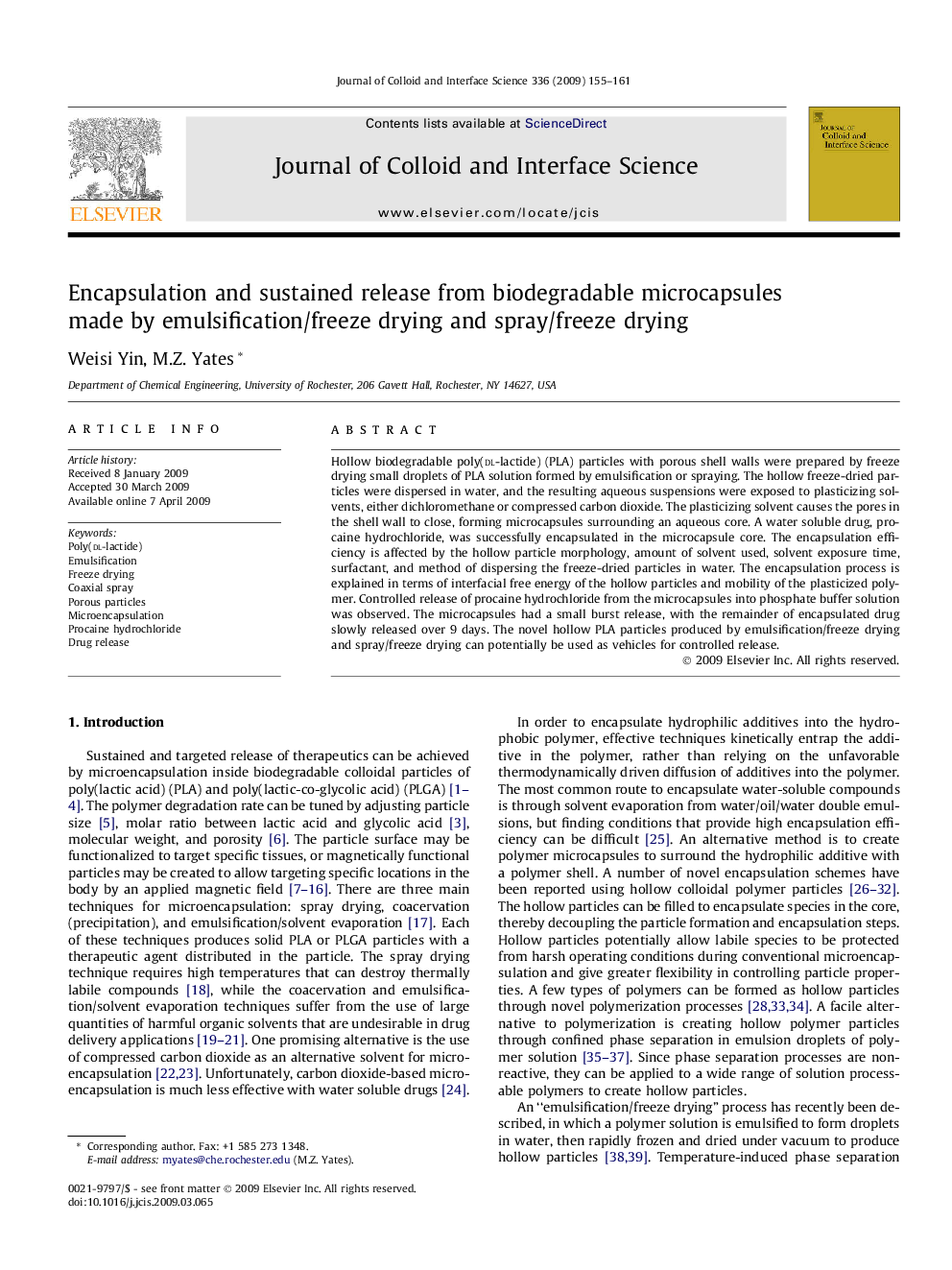| Article ID | Journal | Published Year | Pages | File Type |
|---|---|---|---|---|
| 610352 | Journal of Colloid and Interface Science | 2009 | 7 Pages |
Hollow biodegradable poly(dl-lactide) (PLA) particles with porous shell walls were prepared by freeze drying small droplets of PLA solution formed by emulsification or spraying. The hollow freeze-dried particles were dispersed in water, and the resulting aqueous suspensions were exposed to plasticizing solvents, either dichloromethane or compressed carbon dioxide. The plasticizing solvent causes the pores in the shell wall to close, forming microcapsules surrounding an aqueous core. A water soluble drug, procaine hydrochloride, was successfully encapsulated in the microcapsule core. The encapsulation efficiency is affected by the hollow particle morphology, amount of solvent used, solvent exposure time, surfactant, and method of dispersing the freeze-dried particles in water. The encapsulation process is explained in terms of interfacial free energy of the hollow particles and mobility of the plasticized polymer. Controlled release of procaine hydrochloride from the microcapsules into phosphate buffer solution was observed. The microcapsules had a small burst release, with the remainder of encapsulated drug slowly released over 9 days. The novel hollow PLA particles produced by emulsification/freeze drying and spray/freeze drying can potentially be used as vehicles for controlled release.
Graphical abstractDrug content in PLA microcapsules versus the amount of a plasticizing solvent used for closing pores in hollow PLA shell wall.Figure optionsDownload full-size imageDownload as PowerPoint slide
